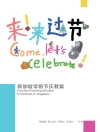This book is about university lectures across the disciplines. It shows us how to make students more engaged, active and included in our lectures. It draws on fifty years of academic research into cognition, and on the best and latest in Multimedia Learning (MML) research. It also draws from decades of the author’s own lecture practice.
In a nutshell, the book urges us to combine imagery with text in our lectures, so how we teach better matches how our students learn.
Digitisation and the web afford us a priceless opportunity to exploit the most visual era of human evolution to better engage our students’ brains. Combining the pedagogic use of the right images and text is scientifically-shown to trigger higher levels of cognitive engagement and to naturally stimulate active learning practices across disciplines.
It is also shown to support dyslexic learners because there is less pressure on limited working memory and more use of visual processing capacity. Neurodiverse students share the same benefits of this method as their neurostandard peers.
This book:
•explains why students learn better with images and words than with words alone
•demonstrates and evaluates the effectiveness of this method using real-world data
•supports lecturers in the practical use of this transformational pedagogy
•encourages inclusive, participatory teaching and learning approaches
Table of Content
Preface
Chapter 1 The logocentric past of our lecture method
Chapter 2 The problem with words
Chapter 3 The use of images
Chapter 4 The evidence
Chapter 5 Dyslexia and images
Chapter 6 Some practical guidelines
Chapter 7 Further development and conclusion
Bibliography
About the author
I’m Senior Lecturer at Loughborough University in the UK. I teach, and have taught, a broad spectrum of subjects for about 25 years. I’m more interested these days in ‘how’ I teach rather than ‘what’; and that’s why I published an e-book on lecturing using multimedia methods.
That project began when I started asking myself what my teaching felt like for those I taught, and that in turn came from realizing that peacebuilding (the subject of my Ph D) doesn’t build peace unless it is informed by the needs of the people in whose name it is being built. As part of the biggest peacekeeping operation in history in the early ’90s, I saw peacebuilding bypass millions of Cambodians it was meant to benefit. That experience helped shape me; my teaching has to demonstrably improve the lives of those I teach
Being on the receiving end of others’ lectures at academic conferences and realizing they were like my own undergraduate presentations made me want to change, to think about what engagement meant when it was applied to one of the most common pedagogy formats in Higher Education – the large group lecture. My latest ebook charts that journey, develops the theory, manifests the method, evaluates the practice and discusses how we can quite easily change our lectures for the better, whatever our discipline.












